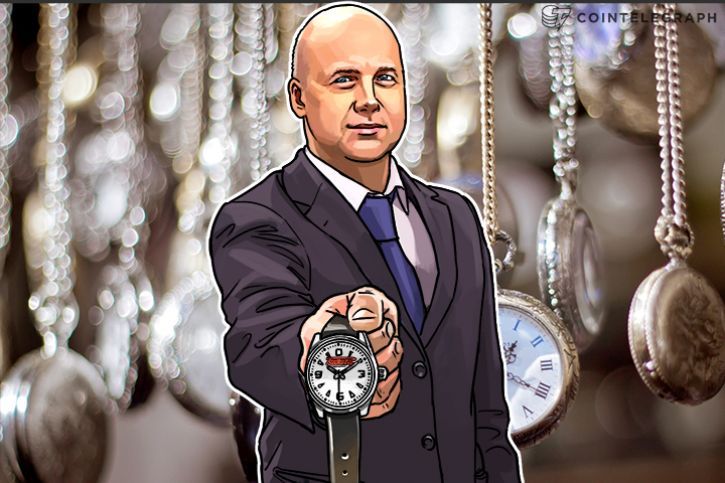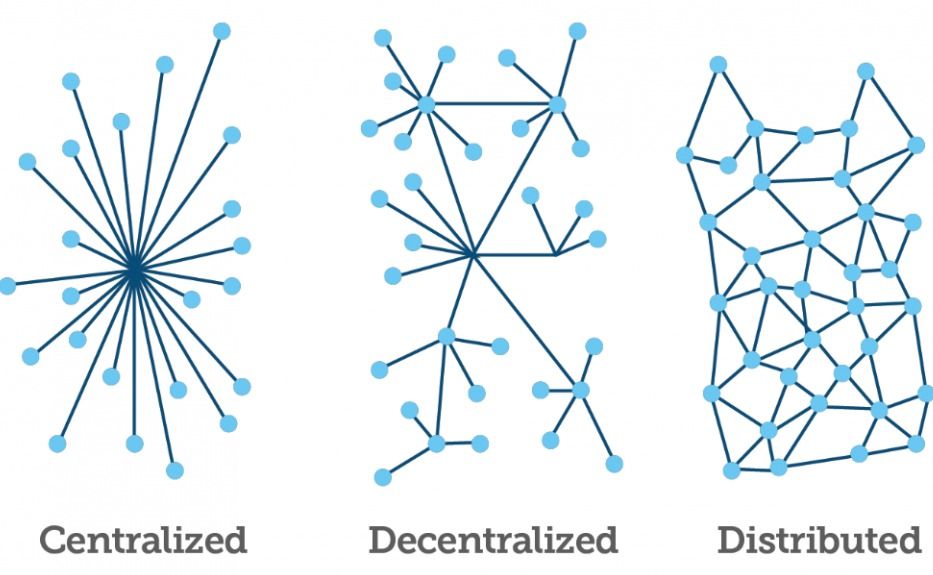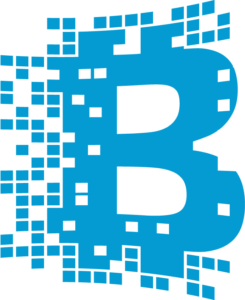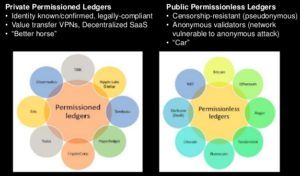Know how blockchain could be used in health care? HHS wants your input.
Category: bitcoin – Page 68

Raketa Watches Trials Blockchain Technology to Fight Counterfeiting
Blockchain Engine and Petrodvorets Watch Factory have introduced blockchain technology into the manufacturing process of Raketa watches, making Raketa one of the first companies in the world to record the production of physical goods in the blockchain.
Established by Peter the Great in 1721, Petrodvorets Watch Factory is one of Russia’s oldest businesses. After the Second World War, the factory produced watches under the brand name Pobeda until 1961, when production of the Raketa [Rocket] watches started, named in honor of the first flight into space by Yuri Gagarin.
In a bid to restructure the historical watch brand, the company entered a rebranding stage in 2009 under the direction of Russian, Swiss and French experts, with director Jacques von Polier heading the creative and design department.

Blog Posts for Postnormal Times
Last week I dipped my toes in the waters of the Lifeboat blog and shared a link about blockchain technology. If you haven’t heard about blockchain technology yet, you can read about it here, here, here, here, here…you get the picture. Blockchain has tons of potential, and appears to also attract hype and money. All which goes to say, there has been a lot of buzz about its social and economic potential. But there is another aspect of blockchain that deserves some futurist exploration, which is that it signals we live in Postnormal Times.
Postnormal Times (PNT) is a fantastic foresight concept that I will focus on in my upcoming Lifeboat posts. There is an underlying theory to it; Ziauddin Sardar explains the entire idea and how it fits into futures studies. Ziauddin Sardar with John Sweeney have expanded the work into a futurist method called The Three Tomorrows of Postnormal Times. It’s well worth reading up on if you enjoy a futurist approach to your work and studies.
I’m still a beginner, but essentially the idea is that we are now in time is a period best characterized as “postnormal,” meaning that the usual ways of solving problems and making progress have stopped working. Our go-to responses, based on all the previously reliable ways of being in and understanding the world are becoming irrelevant and dysfunctional. The simplest way to introduce Sardar’s concept is the three C’s: complexity, chaos and contradictions. These are the key characteristics of postnormal times which I will be exploring in my posts about technology and humanity. I believe the PNT perspective leads to some useful observations about the direction of society over the next decades.
Back to my blockchain example: the Raketa watch company is implementing blockchain in manufacturing, which will protect inventory from counterfeiting. This development signals PNT because it speaks to the complexity of globalized financial and consumer markets. In this case, so intricate as to require a new, high-tech, largely automated and seemingly fail-proof technology. PNT is evident when previous methods of running a company are no longer sound. Enter blockchain to navigate this new business condition.
The PNT characteristic of chaos is also present—the networks of users necessary to have a blockchain at all is a network that behaves as a chaotic system, one that seeks a common goal of verifying blocks in the chain (see links above for more detail on how blockchain works, or read /listen to our chapter in The Future of Business ). Sardar suggests that in PNT terms, all networks are chaos: “Since everything is linked up and networked with everything else, a break down anywhere has a knock on effect, unsettling other parts of the network, even bringing down the whole network.” This is an apt characterization of blockchain technology and why it makes a great counterfeit-detection system.
And, of course, the contradictions of blockchain technology are undoubtedly many, but as we discussed in our chapter in The Future of Business, there is an insistence by its supporters that blockchain is a pure and corruption-free alternative to banks, judges, legal systems and all sorts of oppressive authorities while the truth about blockchain’s origins (i.e. the identity of its inventor, Satoshi Nakamoto ) remain elusive. That’s hardly the most important aspect of the technology’s potential, but it is one of the more intriguing aspects, and something that keeps it firmly in “postnormal” territory.
I hope to explore many more examples of Postnormal Times on this blog.

Ripple Secures NY Bitcoin License | PYMNTS
“The state of New York just got another bitcoin company that can legally operate under the auspices of the state financial regulator’s guidelines.”

How legit is your luxury item?
Raketa will be one of the the first companies in the world to record the production of physical goods in the Blockchain.

Digital Currency Tech Will as Be Transformative as the Internet
Exponential Finance celebrates the incredible opportunity at the intersection of technology and finance. Watch live as hundreds of the world’s leading investors, entrepreneurs and innovators gather in New York to define the future of the way we do business.
In Bitcoin’s early years computer scientists and early adopters were running the show. Now, a new community of academics, entrepreneurs, and economists, are working with cryptocurrencies and blockchain to bring the technology to a new set of diverse applications.
From building peer-to-peer networks for secure data computation and storage to decentralized content management systems that give patients access to health-care records across hospital databases, blockchain and digital currencies are starting to rewrite the rules of the 21st century transaction.

Why Central Banks Will Issue Digital Currency — By Adam Ludwin | Medium
“In an obscure corner of the internet, an anonymous person or persons published a math paper — the “Bitcoin white paper” — that solved a problem that had until then stumped computer scientists: how to create digital money without any trusted parties.”

There is a ‘game changer’ technology on Wall Street and people keep confusing it with bitcoin
Wall Street banks are buzzing about blockchain.
Goldman Sachs says the technology “has the potential to redefine transactions” and can change “everything.”
JPMorgan last month announced it was launching a trial project with the blockchain startup led by its former executive, Blythe Masters. Her company, Digital Asset Holdings, has secured funding from Goldman, Citi, ICAP, and a boatload of other financial firms.

Is a Blockchain a Blockchain if it Isn’t?
Anyone who has heard of Bitcoin knows that it is built on a mechanism called The Blockchain. Most of us who follow the topic are also aware that Bitcoin and the blockchain were unveiled—together—in a whitepaper by a mysterious developer, under the pseudonym Satoshi Nakamoto.
That was eight years ago. Bitcoin is still the granddaddy of all blockchain-based networks, and most of the others deal with alternate payment coins of one type or another. Since Bitcoin is king, the others are collectively referred to as ‘Altcoins’.
But the blockchain can power so much more than coins and payments. And so—as you might expect—investors are paying lots of attention to blockchain startups or blockchain integration into existing services. Not just for payments, but for everything under the sun.
Think of Bitcoin as a product and the blockchain as a clever network architecture that enables Bitcoin and a great many future products and institutions to do more things—or to do these things better, cheaper, more robust and more secure than products and institutions built upon legacy architectures.
When blockchain developers talk about permissionless, peer-to-peer ledgers, or decentralized trust, or mining and “the halving event”, eyes glaze over. That’s not surprising. These things refer to advantages and minutiae in abstract ways, using a lexicon of the art. But—for many—they don’t sum up the benefits or provide a simple listing of products that can be improved, and how they will be better.
I am often asked “What can the Blockchain be used for—other than digital currency?” It may surprise some readers to learn that the blockchain is already redefining the way we do banking and accounting, voting, land deeds and property registration, health care proxies, genetic research, copyright & patents, ticket sales, and many proof-of-work platforms. All of these things existed in the past, but they are about to serve society better because of the blockchain. And this impromptu list barely scratches the surface.
I address the question of non-coin blockchain applications in other articles. But today, I will focus on a subtle but important tangent. I call it “A blockchain in name only”…
Question: Can a blockchain be a blockchain if it is controlled by the issuing authority? That is, can we admire the purpose and utility, if it was released in a fashion that is not is open-source, fully distributed—and permissionless to all users and data originators?
Answer: Unmask the Charlatans
Many of the blockchains gaining attention from users and investors are “blockchains” in name only. So, what makes a blockchain a blockchain?
Everyone knows that it entails distributed storage of a transaction ledger. But this fact alone could be handled by a geographically redundant, cloud storage service. The really beneficial magic relies on other traits. Each one applies to Bitcoin, which is the original blockchain implementation:
 ▪Open-source
▪Open-source
▪Fully distributed among all users.
▪ Any user can also be a node to the ledger
▪Permissionless to all users and data originators
▪Access from anywhere data is generated or analyzed
A blockchain designed and used within Santander Bank, the US Post Office, or even MasterCard might be a nifty tool to increase internal redundancy or immunity from hackers. These potential benefits over the legacy mechanism are barely worth mentioning. But if a blockchain pretender lacks the golden facets listed above, then it lacks the critical and noteworthy benefits that make it a hot topic at the dinner table and in the boardroom of VCs that understand what they are investing in.
Some venture financiers realize this, of course. But, I wonder how many Wall Street pundits stay laser-focused on what makes a blockchain special, and know how to ascertain which ventures have a leg up in their implementations.
Perhaps more interesting and insipid is that even for users and investors who are versed in this radical and significant new methodology—and even for me—there is a subtle bias to assume a need for some overseer; a nexus; a trusted party.  After all, doesn’t there have to be someone who authenticates a transaction, guarantees redemption, or at least someone who enforces a level playing field?
After all, doesn’t there have to be someone who authenticates a transaction, guarantees redemption, or at least someone who enforces a level playing field?
That bias comes from our tendency to revert to a comfort zone. We are comfortable with certain trusted institutions and we feel assured when they validate or guarantee a process that involves value or financial risk, especially when we deal with strangers. A reputable intermediary is one solution to the problem of trust. It’s natural to look for one.
So, back to the question. True or False?…
In a complex value exchange with strangers and at a distance, there must be someone or some institution who authenticates a transaction, guarantees redemption, or at least enforces the rules of engagement (a contract arbiter).
Absolutely False!
No one sits at the middle of a blockchain transaction, nor does any institution guarantee the value exchange. Instead, trust is conveyed by math and by the number of eyeballs. Each transaction is personal and validation is crowd-sourced. More importantly, with a dispersed, permissionless and popular blockchain, transactions are more provably accurate, more robust, and more immune from hacking or government interference.
What about the protections that are commonly associated with a bank-brokered transaction? (For example: right of rescission, right to return a product and get a refund, a shipping guaranty, etc). These can be built into a blockchain transaction. That’s what the Cryptocurrency Standards Association is working on right now. Their standards and practices are completely voluntary. Any missing protection that might be expected by one party or the other is easily revealed during the exchange set up.
For complex or high value transactions, some of the added protections involve a trusted authority.  But not the transaction itself. (Ah-hah!). These outside authorities only become involved (and only tax the system), when there is a dispute.
But not the transaction itself. (Ah-hah!). These outside authorities only become involved (and only tax the system), when there is a dispute.
Sure! The architecture must be continuously tested and verified—and Yes: Mechanisms facilitating updates and scalability need organizational protocol—perhaps even a hierarchy. Bitcoin is a great example of this. With ongoing growing pains, we are still figuring out how to manage disputes among the small percentage of users who seek to guide network evolution.
But, without a network that is fully distributed among its users as well as permissionless, open-source and readily accessible, a blockchain becomes a blockchain in name only. It bestows few benefits to its creator, none to its users—certainly none of the dramatic perks that have generated media buzz from the day Satoshi hit the headlines.
Related:
- Other Blockchain apps will surpass the ubiquity of Bitcoin
- Reuters foresees thousands of blockchain uses
- Tommorow’s Wall Street Journal: Bitcoin is Just the Beginning
Philip Raymond is co-chair of The Cryptocurrency Standards Association,
host & MC for The Bitcoin Event and editor at A Wild Duck.